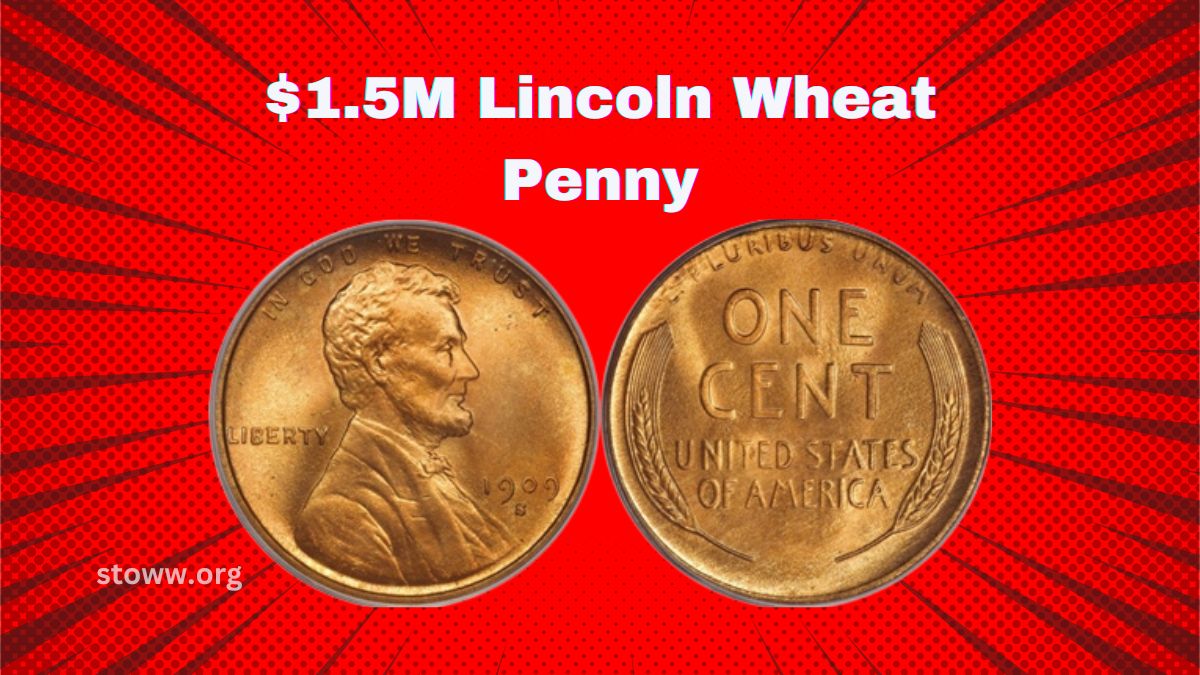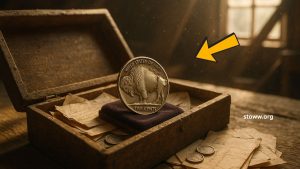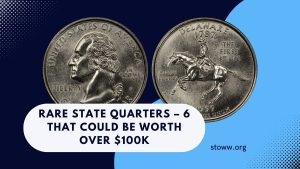The Lincoln Wheat Penny, minted from 1909 to 1958, is a staple in American coinage and a favorite among collectors.
While most of these pennies are common, certain rare specimens have fetched astonishing prices at auctions, with some reaching up to $1.5 million.
This article delves into the specifics of these valuable coins, guiding you on how to identify them and exploring other noteworthy Lincoln Wheat Pennies that could be lurking in your change jar.
The Legendary 1943 Copper Lincoln Wheat Penny
During World War II, the U.S. Mint shifted from copper to zinc-coated steel for penny production to conserve copper for the war effort.
However, a few pennies were mistakenly struck on leftover copper planchets in 1943, resulting in the rare 1943 Copper Lincoln Wheat Penny.
These error coins are among the most coveted by collectors due to their rarity and historical significance.
Notable auction records for the 1943 Copper Penny include:
- $840,000: A 1943-D (Denver Mint) copper penny graded MS64BN sold for this amount in a 2021 auction.
- $504,000: A 1943-S (San Francisco Mint) bronze cent fetched this price, highlighting the coin’s immense value.
These figures underscore the potential worth of discovering such a penny.
Identifying a 1943 Copper Penny
To determine if you possess a 1943 Copper Penny, consider the following steps:
- Check the Date: Ensure the penny is dated 1943.
- Magnet Test: Copper is non-magnetic. If the penny does not stick to a magnet, it could be copper; if it does, it’s likely steel.
- Weight Measurement: A copper penny weighs approximately 3.11 grams, whereas a steel penny is lighter, around 2.7 grams.
- Professional Authentication: Given the prevalence of counterfeits, having the coin authenticated by a reputable grading service, such as PCGS or NGC, is crucial.
Other Valuable Lincoln Wheat Pennies
Beyond the 1943 Copper Penny, several other Lincoln Wheat Pennies are highly sought after:
- 1909-S VDB Penny
- Mintage: 484,000.
- Notable Sale: Red 1909-S VDB Lincoln cents have fetched up to $168,000.
- 1955 Double Die Obverse Penny
- Error: Notable doubling of the date and inscriptions on the obverse.
- Value: Depending on condition, these can range from $1,000 to $15,000.
- 1944 Steel Penny
- Rarity: Most 1944 pennies were struck in copper; a few steel versions exist due to leftover planchets.
- Auction Record: A 1944-S steel cent sold for $373,750.
- 1922 No D Penny
- Error: Lack of the ‘D’ mint mark due to a filled die error at the Denver Mint.
- Value: In high grades, these can be worth up to $90,000.
- 1958 Double Die Obverse Penny
- Rarity: Only a few known examples exist.
- Auction Record: One sold for $336,000.
| Year | Mint Mark | Notable Feature | Estimated Value |
|---|---|---|---|
| 1943 | None, ‘D’, ‘S’ | Struck on copper planchet | Up to $840,000 |
| 1909 | ‘S’ with ‘VDB’ | Low mintage with designer’s initials | Up to $168,000 |
| 1955 | None | Double die obverse error | Up to $15,000 |
| 1944 | ‘S’ | Struck on steel planchet | Up to $373,750 |
| 1922 | None | Missing ‘D’ mint mark | Up to $90,000 |
| 1958 | None | Double die obverse error | Up to $336,000 |
Note: Values are approximate and can vary based on the coin’s condition and market demand.
The possibility of a $1.5 million Lincoln Wheat Penny hiding in your change jar is slim but not impossible. Rare coins like the 1943 Copper Penny and others mentioned above have fetched substantial sums due to their rarity and unique characteristics.
Regularly inspecting your pennies, staying informed about key dates and errors, and seeking professional authentication can enhance your chances of discovering a valuable coin.
FAQs
How can I tell if my 1943 penny is copper or steel?
Perform a magnet test; copper pennies are non-magnetic, while steel pennies will stick to a magnet.
What should I do if I find a potentially valuable penny?
Have the coin authenticated and graded by a reputable service like PCGS or NGC to determine its value.
Are all Lincoln Wheat Pennies valuable?
While most are common and hold minimal value, certain rare dates, mint marks, and errors can make them highly valuable.




I have the 1943 wheat penny who should I contact